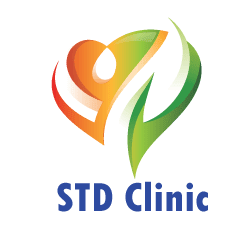STD Prevention for Teens and Young Adults: What You Need to Know
Sexually transmitted diseases (STDs) can have serious implications for pregnant women and their babies. Understanding the risks, preventive measures, and appropriate care is essential for protecting both maternal and infant health. Here’s what you need to know about STDs and pregnancy.
1. Understanding the Risks
Impact on Pregnancy: STDs can cause a variety of complications during pregnancy, including preterm labor, low birth weight, and infections that can affect the newborn.
Transmission to Baby: Certain STDs, such as HIV, syphilis, herpes, and gonorrhea, can be transmitted from mother to baby during pregnancy, childbirth, or breastfeeding.
Complications for Newborns: Babies born with STDs may experience severe health issues such as pneumonia, eye infections, congenital disabilities, neurological damage, and even stillbirth in severe cases.
2. Common STDs and Their Effects
Chlamydia and Gonorrhea: These bacterial infections can lead to premature birth and eye or lung infections in newborns.
Syphilis: This infection can cause miscarriage, stillbirth, or severe birth defects. It’s particularly dangerous if left untreated.
Herpes: Herpes can be transmitted to the baby during delivery, leading to potentially life-threatening infections.
HIV/AIDS: HIV can be passed to the baby during pregnancy, delivery, or breastfeeding, but early treatment can significantly reduce the risk.
Human Papillomavirus (HPV): While HPV is less likely to affect pregnancy directly, certain types can cause warts that may complicate delivery.
3. Prevention During Pregnancy
Regular Testing: Pregnant women should undergo routine STD screenings as part of prenatal care. Early detection allows for timely treatment and reduces the risk of complications.
Safe Sex Practices: Continue using condoms throughout pregnancy to reduce the risk of contracting or transmitting STDs. Open communication with your partner about sexual health is vital.
Vaccination: Ensure you are up-to-date on vaccines that can prevent STDs, such as the HPV and hepatitis B vaccines, before or during pregnancy as recommended by your healthcare provider.
4. Managing STDs in Pregnancy
Medical Treatment: If diagnosed with an STD, follow your healthcare provider’s treatment plan strictly. Many STDs can be treated with antibiotics that are safe for use during pregnancy.
Antiretroviral Therapy (ART): For HIV-positive mothers, ART can significantly reduce the risk of transmitting the virus to the baby. It’s crucial to start and maintain treatment as advised.
Cesarean Delivery: In some cases, such as active genital herpes, a cesarean delivery may be recommended to prevent the baby from coming into contact with the infection during birth.
5. Care for Newborns
Early Screening: Babies born to mothers with STDs should be screened and, if necessary, treated promptly to prevent complications.
Follow-Up Care: Regular pediatric check-ups are essential to monitor the baby’s health and development and to address any issues arising from exposure to STDs.
6. Support and Resources
Healthcare Guidance: Work closely with your healthcare provider to manage your health and the health of your baby throughout pregnancy and after birth.
Educational Resources: Utilize resources from organizations such as the Centers for Disease Control and Prevention (CDC) and the World Health Organization (WHO) for up-to-date information on STDs and pregnancy.
Support Groups: Joining support groups for expectant mothers with STDs can provide emotional support and practical advice.
Conclusion
STDs pose significant risks to both pregnant women and their babies, but with proper prevention, timely testing, and effective management, these risks can be minimized. Pregnant women should engage in regular prenatal care, practice safe sex, and follow medical advice closely to ensure the best outcomes for themselves and their children. By staying informed and proactive, you can protect your health and give your baby the best start in life.
